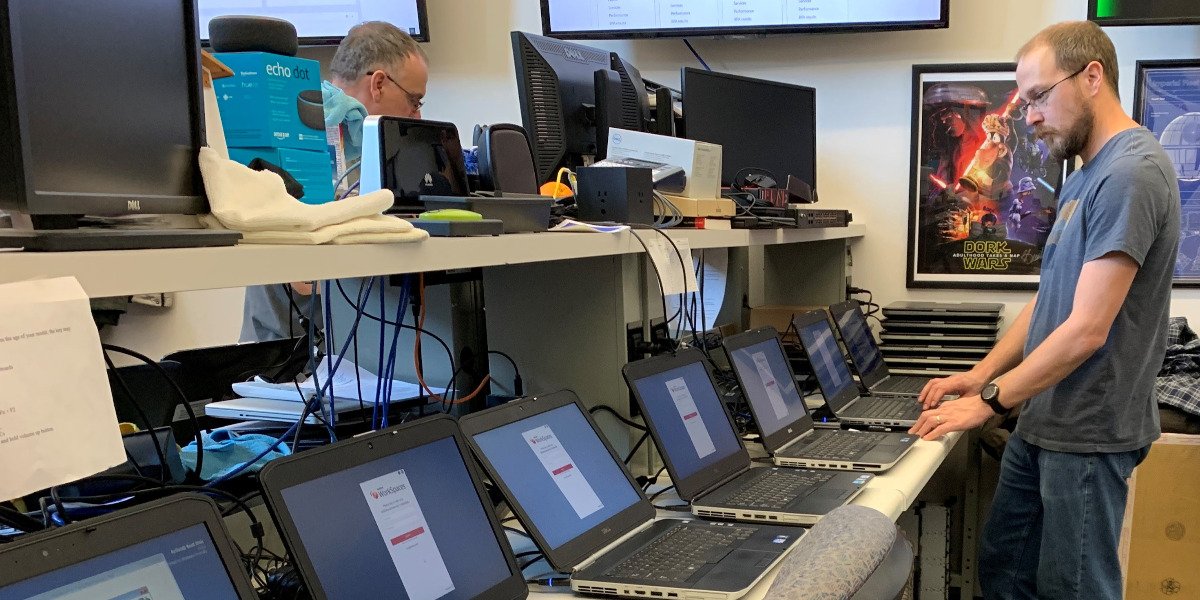AWS Public Sector Blog
Mission: Connection and access for all
During this unique time, our public sector customers remain focused on delivering on their missions every day. From school districts to researchers to governments, our customers are maintaining business and educational continuity while being focused on protecting their citizens, students, and patients.
People around the world are working and learning remotely from their homes. It has never been more important to connect: connect students to learning materials, connect researchers with compute power and data, and connect citizens with real-time access to critical information. Whether you are trying to navigate the current climate or find ways to better deliver to those you serve year-round, equitable access is key.
I hear these common questions from our customers: How can we provide equal access to high-quality learning opportunities to all? How can we remove barriers set by distance and circumstance? How can we make services more accessible for everyone regardless of language, location, or differing learning needs?
We believe the cloud can help. We have heard amazing stories about how our customers and partners have been able to quickly meet the needs of their users by successfully implementing tools like Amazon WorkSpaces or Amazon Alexa to connect with their users—anytime and anywhere.
Working remotely for the first time
Athabasca University (AU) is a Canadian online research university. As the realities of work from home hit with COVID-19, AU had to act quickly to get about 180 staff across Alberta connected. Most only had office desktops to connect from home. IT staff wiped laptops that weren’t being used, installed a new operating system, and set users up with Amazon WorkSpaces. Within a few days, all staff could work remotely for the first time.
This was new for instructors, but students at Athabasca and globally have previously relied on technology to learn and connect. Now, AU is able to deliver a valuable education experience to students—wherever they are— from remote professors.
Reaching students and teaching mathematics around the world with computer games
Around the world, children speak and learn in many different languages. When it comes to mathematics, language should not be a barrier to empowering children as they learn problem-solving and critical thinking skills.
In Israel, Matific was designed by educational experts to foster mathematics excellence from kindergarten through sixth grade (K-6). Immersing students in an engaging learning platform and deep conceptual understanding, Matific supports students in learning mathematics in a playful and thought-provoking manner.
Each one of Matific’s 2,000+ gaming activities can have 200 different possible questions. The team uses Amazon Polly to automate voice instructions, which saves countless hours having to manually record all of the possible instructions. Instead, Amazon Polly automates the instructions in all available languages. The voice instructions allow the students to play the games without having to read, enabling younger children to join in.
No Internet, no electricity? No problem.
BluPoint makes access to digital content possible in unconnected parts of the world. During a research project at the University of Southampton in the UK, Professor Mike Santer was researching the use of mobile phones in Sub-Saharan Africa. His research led him to wonder how the power of the Internet can be brought to the three billion unconnected people in the world. Eventually, his enquiry led him to co-found BluPoint, a startup with a mission to develop Internet solutions for places where connectivity is either intermittent, non-existent, or cost-prohibitive.
BluPoint uses Amazon Elastic Compute Cloud (Amazon EC2), Amazon Simple Storage Service (Amazon S3), and Amazon Elastic File System (Amazon EFS).
What difference does this technology make in the school? The biggest difference is the change in the chalk-and-talk paradigm of classrooms.
If students miss a day of school, traditionally they would miss out on that day’s lesson. With BluPoint, learning can be completely adaptive. Students can now explore at their own pace, on their own device, with access to a wide range of content that was previously inaccessible to them—even in areas of low Internet connectivity.
These customers are just a few examples of innovative organizations driving real change in equitable access. For more information about Amazon’s actions to support those directly and indirectly impacted by COVID-19 and our continued support for making education more accessible, visit Amazon’s Day One Blog, Jeff Barr’s Blog, our education webpage, and our education blog. And comment below if we can help you.
